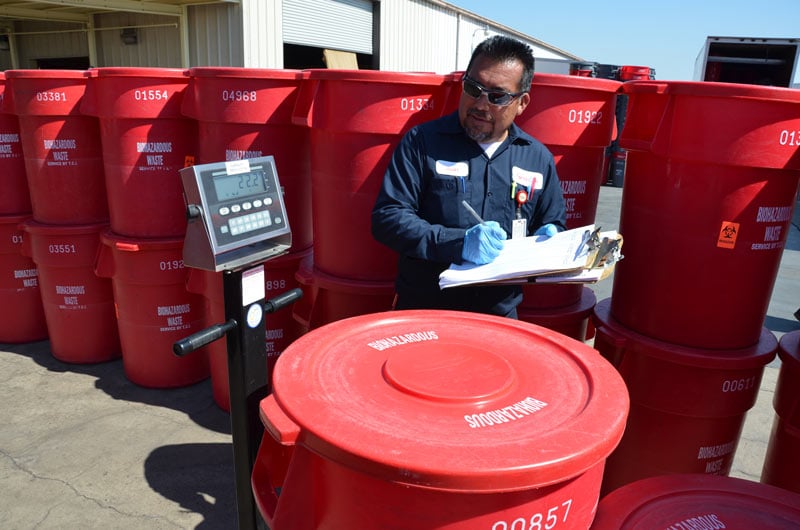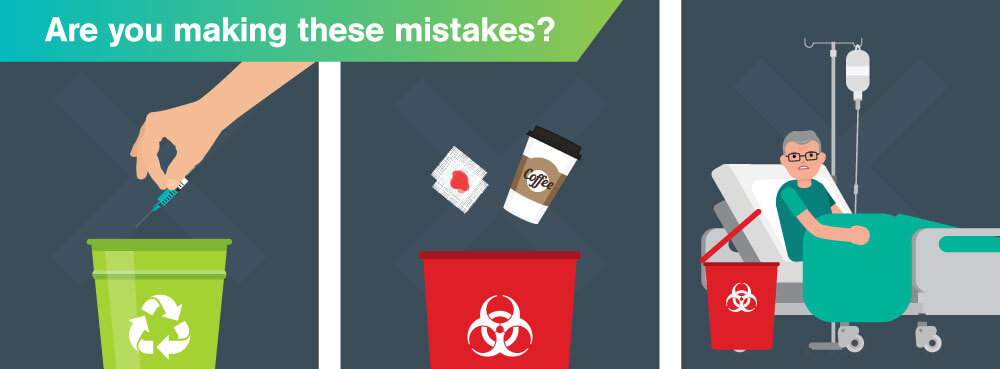Lasting Solutions for Medical Waste Disposal
The appropriate monitoring and disposal of medical waste is important in maintaining a lasting and risk-free healthcare system. This intro will explore various lasting remedies for clinical waste disposal, consisting of waste segregation and sorting, on-site waste treatment systems, reusing and reuse programs, waste-to-energy conversion innovations, as well as cooperation and education campaigns.
Waste Partition and Arranging
The process of waste segregation and sorting is crucial in making sure correct management and disposal of clinical waste. Medical waste is categorized into different categories based upon its potential danger to human wellness and the atmosphere. Appropriate partition and sorting of waste help to reduce the danger of contamination and make certain that each sort of waste is dealt with and dealt with suitably.
The very first action in waste segregation and sorting is to recognize and separate various types of medical waste at the point of generation. This includes identifying the numerous groups of waste, such as transmittable waste, sharps waste, pharmaceutical waste, and chemical waste. medical waste disposal. Each classification needs certain taking care of and disposal approaches to avoid damage to medical care employees, people, and the setting

On-site Waste Therapy Solutions
Continuing from the previous subtopic on waste partition and sorting, an efficient service for sustainable clinical garbage disposal is the application of on-site waste treatment systems - medical waste disposal. These systems allow medical care facilities to treat their medical waste on-site, reducing the demand for transportation and disposal at off-site facilities. On-site waste therapy systems normally include modern technologies such as autoclaves, microwave systems, or chemical sanitation systems
Autoclaves, typically made use of in health care settings, make use of high-pressure steam to sanitize and deal with medical waste. This procedure successfully kills microorganisms, viruses, and other possibly hazardous microbes, making the waste safe for additional handling and disposal. Microwave systems, on the other hand, usage microwave radiation to heat and deal with the waste, achieving similar results to autoclaves.
Chemical sanitation units entail making use of chemicals to sanitize and deal with clinical waste. These devices can utilize different disinfectants, such as chlorine-based options, to neutralize microorganisms and reduce the danger of contamination. The cured waste can then be securely gotten rid of in normal waste streams or undergo more treatment, such as shredding or incineration.
Executing on-site waste therapy systems supplies several advantages. It lowers the environmental effect related to transferring clinical waste to off-site centers, reducing carbon discharges and the risk of crashes throughout transport. Additionally, it supplies health care centers with even more control over the treatment procedure, guaranteeing conformity with guidelines and reducing the potential for unauthorized access to sensitive clinical waste.
Recycling and Reuse Programs
To additionally boost lasting clinical garbage disposal techniques, medical care facilities can implement recycling and reuse programs, building on the foundation of on-site waste treatment systems. Recycling and reuse programs offer an added layer of ecological duty by drawing away clinical waste from land fill and searching for different usages for sure materials.
One secret element of reusing and reuse programs is the partition of waste at the source. medical waste disposal. By applying correct waste partition methods, healthcare centers can separate recyclable materials, such as plastics, metals, and glass, from non-recyclable waste. This permits the efficient recycling of these materials, reducing the need for virgin sources and decreasing the ecological influence of why not check here clinical garbage disposal
In enhancement to recycling, health care facilities can discover possibilities for recycling certain clinical items. For instance, single-use products like surgical drapes and gowns can be sterilized and reused, lowering the need for brand-new products and lessening waste generation. Recyclable sharps containers can likewise be employed, lowering the quantity of plastic waste produced from disposable containers.
Implementing recycling and reuse programs calls for appropriate facilities and training - WasteX Medical Waste Disposal. Medical care centers should purchase proper recycling containers, segregation systems, and sanitation equipment, along with make sure staff are informed on proper waste administration practices
Waste-to-Energy Conversion Technologies
One possible method to address clinical waste disposal sustainably is with the utilization of waste-to-energy conversion modern technologies. These technologies use an encouraging option to the expanding issue of clinical waste, which positions substantial environmental and public health and wellness dangers. Waste-to-energy conversion involves converting the natural components of medical waste right into power, such as heat or electrical power, via various procedures like gasification, pyrolysis, and incineration.
Incineration is the most typically utilized waste-to-energy modern technology for clinical waste disposal - WasteX Medical Waste Disposal. It involves the controlled combustion of waste at high temperatures, converting it into ash, gases, and warm. This warm can be made use of to create vapor, which can after that be exchanged power
Pyrolysis and gasification are more recent technologies that provide more eco-friendly alternatives to incineration. Pyrolysis involves heating the waste in the lack of oxygen, causing the manufacturing of gases and char. Gasification, on the other hand, converts waste right into a synthetic gas or "syngas" that can be used as a gas for electrical energy generation or other commercial processes.
These waste-to-energy conversion technologies not just decrease the quantity of clinical waste yet also provide a source of eco-friendly energy. Furthermore, they can help in reducing greenhouse gas emissions and reliance on fossil fuels (WasteX Medical Waste Disposal). However, it is essential to guarantee that these technologies are carried out with proper exhausts control procedures to minimize any possible unfavorable influence on air quality and public health and wellness.
Partnership and Education Initiatives
Cooperation among stakeholders in the medical care industry is important for executing lasting options for clinical waste disposal. In order to properly address the difficulties connected with medical waste monitoring, it is vital for healthcare centers, waste administration business, regulators, and other appropriate parties to function together.

In addition, education and learning campaigns play a crucial function in promoting lasting practices. Healthcare professionals need to be familiar with the environmental impact of inappropriate waste monitoring and the relevance of applying lasting remedies. Educating programs and instructional products can help them understand the correct partition of waste, making use of environment-friendly options, and the benefits of waste-to-energy conversion technologies.
Cooperation and education and learning can likewise facilitate the growth of guidelines and guidelines for medical garbage disposal. By interacting, stakeholders can add to the development of extensive policies that ensure secure handling, transportation, and therapy of clinical waste.
Final Thought
To conclude, adopting lasting options for medical garbage disposal is important in order to reduce the adverse influence on the setting and public health and wellness. Waste partition and sorting, on-site waste treatment systems, reusing and reuse programs, waste-to-energy conversion innovations, and cooperation and education campaigns are all essential techniques to attain this goal. Applying these options calls for partnership in between healthcare centers, waste monitoring companies, and government agencies, along with continuous education and learning and recognition campaigns.
The process of waste partition and sorting is essential in making sure proper administration and disposal of clinical waste.The initial step in waste segregation and sorting is to determine and divide different types of medical waste at the factor of generation. This involves acknowledging the numerous categories of waste, such as contagious waste, sharps waste, pharmaceutical waste, and chemical waste.Proceeding from the previous subtopic on waste segregation and sorting, an efficient remedy for sustainable medical waste disposal is the execution of on-site waste therapy systems. The treated waste can then be safely disposed of in routine waste streams or undertake further treatment, such as shredding or incineration.